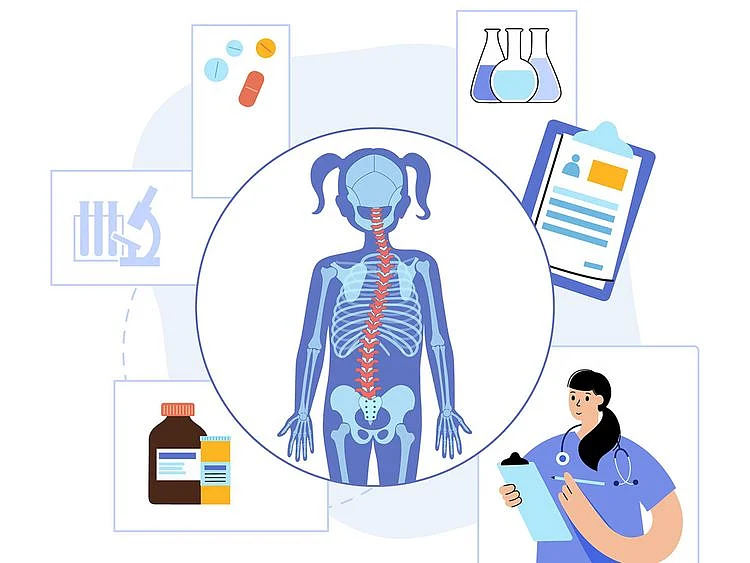Scoliosis in kids: What you need to know
A sideways curvature of the spine affects 2 to 3 per cent of the population

It’s common and often goes unnoticed in young kids. However, scoliosis – or a sideways curvature of the spine – affects almost 2 to 3 per cent of the population.
What happens what someone has scoliosis?
Usually nothing. It’s often so mild that you can’t really tell – except for an unequal standing of the shoulders or lopsided hips. But what could happen is, explains Dr Antony Louis Rex Michael, Consultant Orthopaedic Spine Surgeon with Neurospinal Hospital, that the curvature of the backbone could cause a rotation of the vertebrae. The unnatural bending then can make the channel of bones look like an ‘S’ or a ‘C’ instead of its usual straight line.
What are the different types of scoliosis?
US-based Cleveland Clinic explains that there are three types of paediatric and adolescent scoliosis:
Idiopathic scoliosis. This is the most common type. ‘Idiopathic’ means that the cause is unknown, but because it runs in families, it has a genetic basis.
Congenital scoliosis. This is a fairly rare spine abnormality detected at birth.
Neuromuscular scoliosis. This is a curvature of the spine caused by abnormalities in the muscles and nerves that support the spine. Examples include patients with cerebral palsy, spina bifida and muscular dystrophy.
What causes scoliosis?
Dr Louis Rex Michael says, “There are several causes of scoliosis. The cause of the commonest type called 'idiopathic scoliosis' is unknown though several theories exist. Other forms of scoliosis are caused by neuromuscular issues, for example, cerebral palsy; syndromes related to neuromuscular imbalance; congenital malformations of the vertebrae, etc.”
What tests help a doctor determine the patient has the condition?
There are a number of tests that must be conducted to conclude that a patient has the condition and to decipher the severity of it. SpineUniverse, an online resource dedicated to spine education, explains the tests as physical and imaging-based.
Physical tests:
In addition to the physical evaluation, your doctor would perform a neurological examination, states the website. The purpose is to notate areas of numbness, tingling, weakness, and other neurological symptoms, which may include changes in bowel or bladder function.
Imaging tests
Two views are typically taken in x-rays for scoliosis to illustrate the full nature of the curve, it adds:
Are girls or boys more likely to get idiopathic scoliosis?
Idiopathic scoliosis is more common in girls, says Dr Louis Rex Michael.
What is the treatment for scoliosis?
He says: “The treatment depends on the severity of the scoliosis at time of diagnosis and the underlying cause. Earlier diagnosis allows treatment with braces (orthosis) and physical therapy. Late diagnosis and severe curves (over 50 degrees) may require surgical correction and fusion of the affected vertebrae. Newer non-fusion surgical options are now gaining increasing recognition. This includes vertebral body tethering."
If your child needs surgery – what is the recovery time?
Dr Louis Rex Michael explains that recovery from surgery is approximately 8 to 12 weeks though time in hospital is around one or two weeks depending on the severity and type of surgery.
Surgery is rare
Only a small percentage of scoliosis patients require treatment. About 30 per cent require bracing, and an even smaller per cent — about 10 per cent — of patients actually require surgery. Source: John Hopkins Medicine, US
What does aftercare look like?
“Aftercare from surgery focuses on pain management and rehabilitation in the early period and maximising function in the later stages. Follow up with X-Rays is important to tailor rehabilitation and activity,” he adds.
Want us to discuss a topic? Write to us at parenting@gulfnews.com
Sign up for the Daily Briefing
Get the latest news and updates straight to your inbox
Network Links
GN StoreDownload our app
© Al Nisr Publishing LLC 2025. All rights reserved.